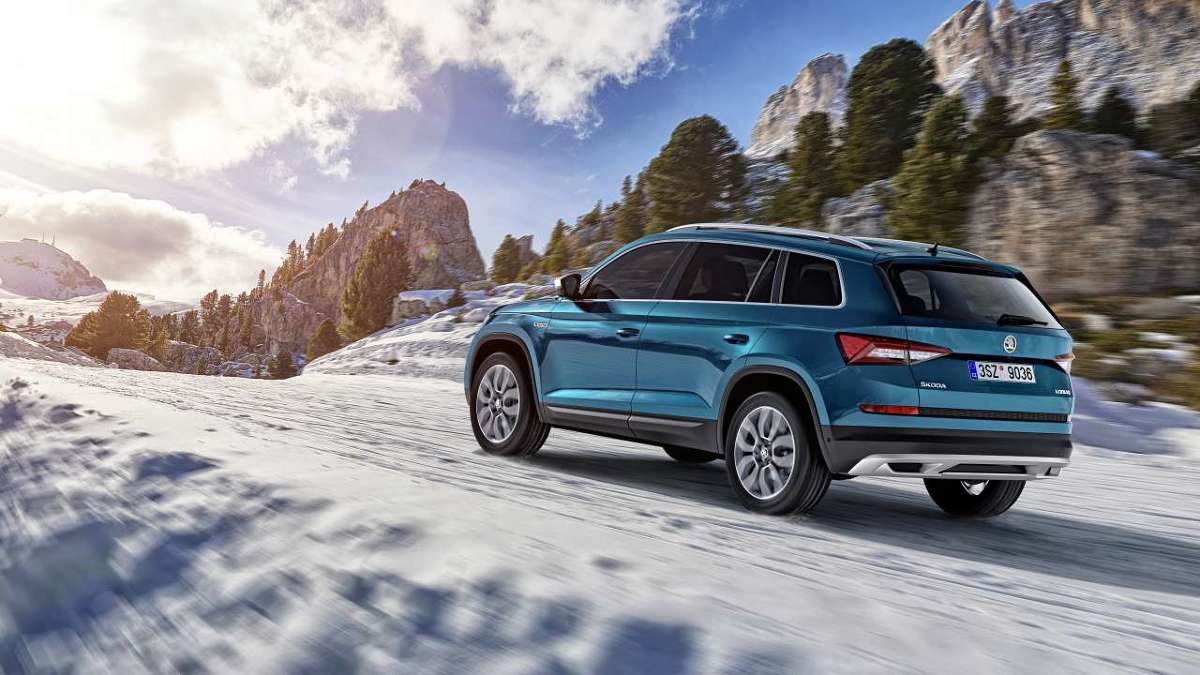
Driving course. Starting, braking and turning on slippery surfaces
 Winter is the most inconvenient time of the year for motorists. Frequent rains and freezing temperatures make the road surface slippery, which increases the risk of skidding. It is important not only to adjust the speed to such conditions, but also the ability to cope with dangerous situations.
Winter is the most inconvenient time of the year for motorists. Frequent rains and freezing temperatures make the road surface slippery, which increases the risk of skidding. It is important not only to adjust the speed to such conditions, but also the ability to cope with dangerous situations.
If the surface is slippery, starting under such conditions can be very difficult for many drivers.
- In such a situation, many drivers make the mistake of adding gas. As a result, the wheels lose traction and the surface under the tires becomes even more slippery. Meanwhile, the point is that the force required to roll the wheels should not exceed the force that weakens their grip on the road, explains Radosław Jaskulski, instructor at Skoda Auto Szkoła.
So, in order to avoid slipping on the spot, after shifting into first gear, gently press the accelerator pedal and just as smoothly release the clutch pedal. If the wheels begin to spin, it is necessary to drive a few meters with the clutch pedal slightly depressed (the so-called half-clutch). You can also try starting in second gear. The torque that goes to the drive wheels, in this case, is less than in first gear, so it is more difficult to break the clutch. If that doesn't work, put carpet under one of the drive wheels or sprinkle it with sand or gravel. Chains will come in handy both on snow-covered surfaces and already in the mountains.
Driving on slippery surfaces can also cause problems when cornering, as changing weather conditions can reduce traction. Therefore, if we were driving a well-known turn on a dry surface at a speed of, for example, 60 km / h per hour, then in the presence of ice, the speed would have to be significantly reduced. Driving technique is also important.
– When crossing a turn, you should try to overcome it as softly as possible. If the turn is tight, slow down and run before the turn, we may start to accelerate as we exit the turn. It is important to use the accelerator pedal sparingly, advises Radosław Jaskulski. “It’s better to take the turn conservatively and with exaggerated caution than a mile an hour too fast.
The Skoda Auto Szkoła instructor adds that in such a situation it is worth acting according to the ZWZ principle, i.e. external-internal-external. Having reached the turn, we approach the outer part of our lane, then in the middle of the turn we reach the inner edge of our lane, then smoothly at the exit of the turn we gently approach the outer part of our lane. steering wheel movements.
Braking can also be a problem on slippery surfaces, especially when you need to brake hard. Meanwhile, if you exaggerate with the braking force and press the pedal to the end, then in the event of an attempt to go around an obstacle, for example, if forest animals run out onto the road, it is likely that the car will skid and roll. straight ahead.
“Therefore, let's use impulse braking, then there is a chance to avoid skidding and stop in front of an obstacle,” emphasizes Radoslav Jaskulsky.
Modern cars are equipped with an ABS system that prevents the wheels from locking when braking. Thus, even after fully depressing the brake pedal, the driver can control the steering wheel.
Driving instructors advise you to brake as often as possible in winter. For example, in the city, having reached the intersection in advance, you can reduce the gear and the car will lose speed. However, it is important to do this smoothly, without jerking, because this can turn the car over.
Winter driving rules can be practiced in special driving improvement centers, which are becoming more and more numerous in Poland. One of the most modern such facilities is the Škoda circuit in Poznań. The center consists of four specially designed modules that allow you to master the art of driving in emergency situations on the road, including safe cornering and braking on slippery surfaces. Incorporating a special device called a chopper is used to make the car slide into an uncontrolled skid. There is also a protective plate with automatically controlled water curtains, on which skid recovery training takes place. There is also a circle at the Škoda circuit in Poznań where you can check the operation of the electronic stabilization systems.